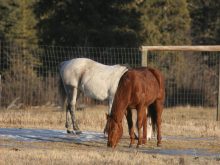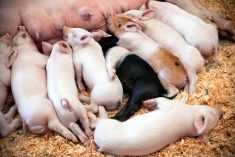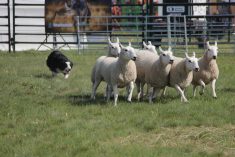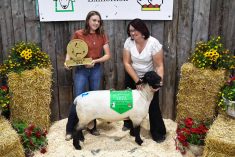Fresh off a year of sweeping change, Alta Genetics, a Calgary-based company that deals in livestock embryo and semen, is banking a large piece of its future on dairy genetics.
Company financial analyst Pat McAllister is confident about the new five-year plan and marketing strategy that promotes the dairy division.
“We’re going to shift a lot of our energies into the dairy semen. It seems the gross margin on the dairy semen is so much better than anything else we do,” said McAllister.
Dairy semen accounts for 69 percent of revenue.
Read Also

Why selenium is still an important factor in horse health
Selenium is an essential equine trace mineral that supports antioxidant defense, muscle integrity, immune function, metabolism and thyroid activity.
The company reported revenues were $45.1 million, but its annual report said there was a net loss after taxes of $2.9 million for the year ending Dec. 31, 1996.
Contract buyouts, the end of a distribution partnership with Semex USA, new offices and establishing a new marketing plan dipped into company revenues.
As well, last year marked the end of marketing partnerships Alta Genetics had with other Canadian genetic companies.
“We will be marketing nationally for the first time in our history at the end of 1997,” McAllister said.
A publicly traded company since 1993, Alta Genetics has sales in 50 countries other than Canada.
Its stronger emphasis on dairy genetics will be carried overseas through a joint venture in Europe called Alta Pon, which will start a European dairy animal product line.
Alta Pon plans to test about 100 dairy sires in Europe each year. It should be ready to market the semen by 2000.
The partnership helps Alta Genetics widen its dairy genetic pool with three types of cattle.
The European dairy industry prefers more industrial type milk, so it breeds for high fat and protein content. In the U.S., producers look for high volumes of milk. Canadian producers want a balanced approach that includes high production and high nutrient values.
Alta Genetics has also probed South American markets, but gaining a beachhead there has been slower than in the U.S. or Europe.
“That tells me they’re looking more for volume of milk when they’re buying dairy genetics,” McAllister said.
Meanwhile, Alta Genetics is scaling back its beef division. It has decided to stop producing beef embryos and collecting semen on its own for resale. But it will deal with individual clients for custom work.
Part of that decision came because of lower demand from primary beef producers as the low point in the cattle cycle encouraged selling animals rather than expanding herds.
Last year, Alta Genetics also sold live beef cattle and semen to China, a developing market looking to upgrade its beef and dairy herds. Chinese cattle tend to be dual purpose, used for milk and meat.
“The things we absolutely have to do right are: the quality of bulls we test as number one and a distribution network will be number two,” McAllister said.















